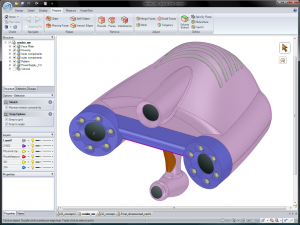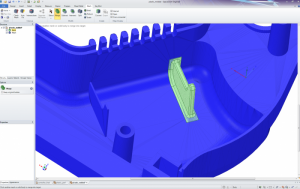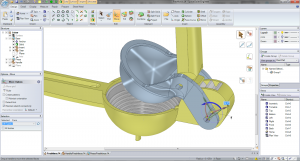Engineers can accelerate product development time and more accurately predict in-flight icing to improve aircraft safety thanks to advancements ANSYS (NASDAQ: ANSS) has delivered with two new product releases. The most recent release of ANSYS® SpaceClaim™ and ANSYS® FENSAP™ dramatically enhances speed, efficiency and reliability – providing users with revolutionary workflows and unique capabilities.
As companies turn to rapid digitalization for every facet of product development, the ability to easily manipulate geometry for both design and manufacturing is crucial. ANSYS SpaceClaim 2016 transforms product development by empowering users to quickly and easily manipulate 3-D models across the entire product development cycle. SpaceClaim’s unique approach delivers superior ease of use and productivity, providing the user with extreme flexibility within product workflows.

“Since day one, our focus has been to provide customers with a solution to quickly create, edit or repair geometries as needed in an open platform environment,” said Frank DeSimone, senior director of product development at ANSYS. “For this release, we focused on solving challenges working with complex geometry, developing new tools like the Shrinkwrap and Skin Surface to decrease the time needed to reverse-engineer parts or prepare models for 3-D printing.”
Whether creating designs, editing, cleaning geometries from other tools or reverse engineering existing products, SpaceClaim leapfrogs previous releases by delivering unprecedented results such as 10-times faster 3-D modeling compared to other products on the market. Start-up time is two to four times improved; large model save and load stages are 100 times their former speed; and some tools, such as imprint, result in a 200-times speed improvement. From machinist to simulation analyst, existing users will see vast improvements and users of other tools will be amazed by the novel approach to geometry.
A list of new and enhanced features can be found here. http://s3.amazonaws.com/images.spaceclaim.com/RSIMG/SPC+2016+Fact+Sheet_PRINT-FNL.pdf
Aerospace engineers who analyze aircraft icing can take immediate advantage of the comprehensive state-of-the-art capabilities with FENSAP-ICE and FENSAP-ICE Turbo. The new release — the first since ANSYS acquired this technology – provides improved integration with ANSYS CFX software, its class-leading turbomachinery fluid dynamics simulation software. The enhanced integration enables users to take advantage of the unique capabilities of FENSAP-ICE and FENSAP-ICE TURBO to optimize designs and improve safety by more accurately predicting ice formation in jet engines.
The new release adds numerous enhancements for users of these two systems, enabling them to predict in-flight icing for aircraft, engines, probes and components more efficiently and accurately. The FENSAP product family incorporates speed-up and efficiency gains, enabling the user to incorporate icing prediction in their simulation-driven product development processes.
“The new release delivers streamlined import and export of required data for more efficient and accurate exchange between the FENSAP products and ANSYS computational fluid dynamics solutions,” said Andre Bakker, senior director of fluids business unit, ANSYS. “Maximizing the accuracy of icing simulation ensures that the engineering insight gained from analysis and the resulting design decisions made truly serve to improve flight safety.”
The FENSAP release also includes a number of enhancements and extensions that further efficiency, including more flexible meshing options, faster solution algorithms, direct extraction of key simulation results and more powerful post-processing. These contribute to reducing the time and effort required to investigate and solve complex questions associated with icing.
A list of new and enhanced features can be found here. http://www.ansys.com/Products/Fluids/ANSYS+FENSAP-ICE
ANSYS, Inc.
www.ansys.com





